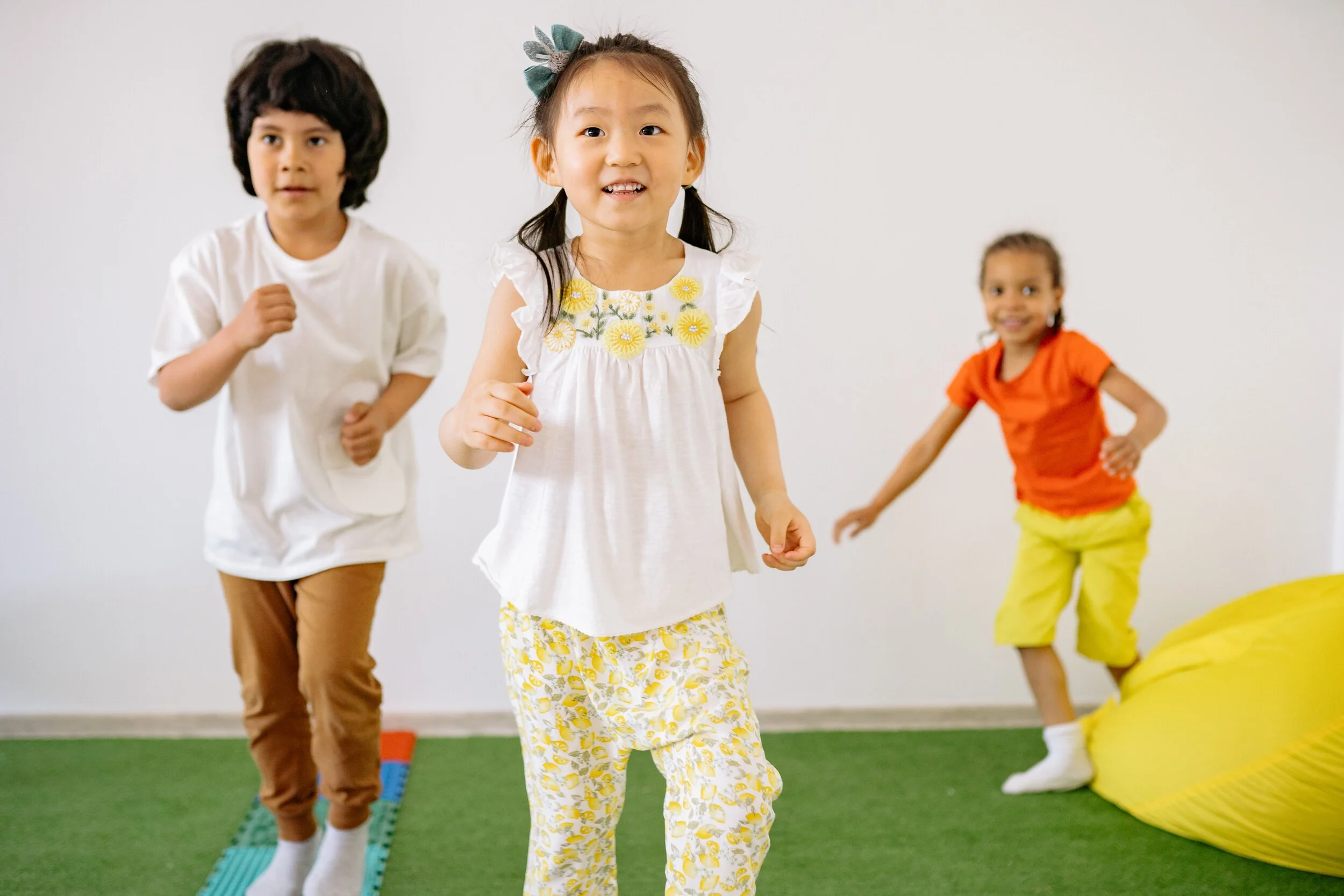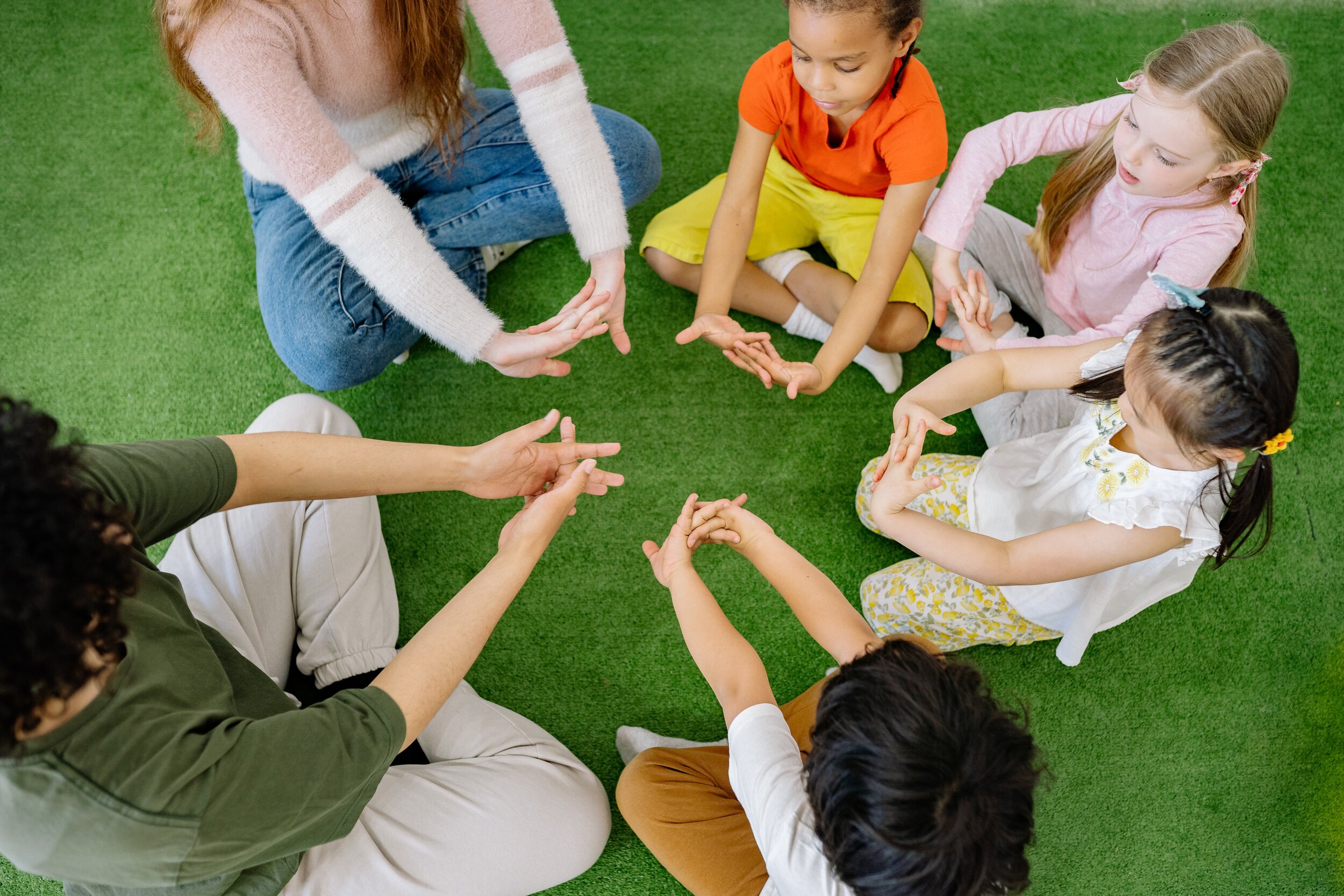Music For Kiddos Podcast
Listen on: Apple Podcasts | Spotify | Amazon Music | Stitcher
What do you do when your music class becomes chaotic and you can’t seem to get them back?
It happens. Sometimes it seems like there's just something in the air. Sometimes, something happened earlier in the day with the kids in their class. Maybe a few kids are having a particularly challenging day. Sometimes it is just close to impossible to get the attention back and to get that sense of calm back.
I’m going to share some ideas with you about how to bring kids’ level of alertness down and get their attention back. But first, I have to preface saying that there's really no sure way to do this. Sometimes it’s just going to happen. I have experience with classes going to complete and utter chaos enough times that I have been able to try a lot of things.
I think it's important to first talk about what happens when a class turns to chaos, because the way that you avoid it in the future is by being able to recognize what happened in the first place.
There are a lot of possibilities for why this might happen, but for me, a lot of it tend to stem from a sensory perspective. So if you listen to episode one of the Music For Kiddos Podcast or if you read this post, you'll hear that I really approach music therapy, music classes and early childhood music with this sensory-based mindset.
I'm really looking at how the kids are responding from a sensory perspective and I ask myself some questions:
Are they sensory seekers?
Are they sensory avoiders?
Do they get overstimulated?
What gets them overstimulated?
Do they need more stimulation? If so, what do they need?
What senses do they need activated in order to “turn on their ears” so that they can listen, learn and participate to their fullest potential.
The sensory environment is also incredibly important. We’re not only talking about the sensory background environment, like the background sound, or the lighting but also about the sensory stimuli that you are bringing into the room.
What instruments are you bringing in?
Does it have a particularly sharp sound and frequency? Or a bright sound?
Does it have a more mellow, cool sound?
Are the songs that you are bringing in excessively stimulating?
Did you just bring in six brand new songs into a preschool class? (which can be incredibly overstimulating for some kids because their brains are trying to process all of that brand new information)
If it's happening back to back and there's instruments involved and there are words and lyrics and colorful scarves, etc., you might just be over overdoing the sensory aspect. Run through all of the senses in your mind and determine what things in their environment may be impacting the music class.
Think about what they children are seeing: Is the classroom a mess? Are things “all over the place” in the classroom that makes it so that they can't really focus on music? Are the lights really bright & overwhelming?
Think about the smells: Is there a smell in the room? Are they using a cleaning product that has a really strong scent to it? Is there a candle in the room and if so, is that helping or is that hurting?
If you run through the five senses and assess what's going on in the environment around, you might find that you can very quickly adjust a few things (the light, your own volume level, the volume level of the recorded music you're playing, the volume level of instruments, etc.).
Think about the space. Are there kids that are in direct eyesight of each other? Maybe you need to consider moving one of their seats so that they don't have immediate access to each other. Are they getting into each other’s personal space?
Think about the flow of the lesson: Is there structure and routine? Do the kids know what's coming next? Do they know the approximate order of things that are happening? Do they know the routine well enough to know where they're supposed to sit and where they're supposed to be? This can provide a lot of stability and comfort for some.
We want to look for long-term solutions and short-term solutions. In this blog post and on episode 35 of the Music For Kiddos Podcast, we're going to mainly talk about short-term solutions.
What do you do in the moment when the chaos is increasing? What are some things that you can try right away?
Long-term Solutions
Long-term solutions are frequently related to adding more structure and routine. This can include walking into the class and turning off one of the lights, starting with the same song and ending with the same song, maybe the second thing you always do is read a book or singing a breathing song or a yoga song before you sing goodbye.
By bringing familiarity and engaging in a routine and structure that is very predictable and the kids have an idea of what to expect next, will always be beneficial.
So, think about the long-term structure and the long-term consistency that you can bring, especially if you are brand new with a group of kids. The first few weeks are going to be really challenging while they get to know you and they get to know the structure that they can expect.
Short-term solutions
There are five things in particular that might be helpful to think about to help with the music class chaos:
1. Use the ISO-principle
The ISO-principle, which is a music therapy term, means that you match the music to their energy level. So if you have this escalating chaos in your classroom, probably the very last thing you'll want to do is turn on a lullaby and tell everybody to lie down on the floor, close their eyes and take nice deep breaths. Why? Think about this: if you are exceedingly upset about something, and somebody comes up to you and says “just take a deep breath, just take a deep breath”, it's not going to work. It's probably going to make you more upset.
The ISO-principle is more of an intuitive thing that a lot of people do. An example of this is when they have a crying baby and they bounce the baby or tap them on the back. This bouncing, in a way, meets the energy level of their cries, and then they gradually calm them into sleeping with more gentle rocking.
With the ISO-principle, you meet the arousal level or match the energy level of the kids with the music, and then gradually transition them down to a lower energy level. If the chaos is increasing, then you're going to start with a really energetic movement song where kids can get their wiggles out and over the course of the music, potentially through multiple songs, you're going to take that energy of movement to transition them to a less energetic movement, all the way down to breathing deeply, doing yoga stretches, meditation, etc.
2. Engage multiple senses
We talked about this topic previously, but to reiterate, run through the different senses and determine if there’s overstimulation anywhere. Then, actively engage those senses. The more senses that you can engage a child in, the more likely you are actually going to truly capture their attention.
3. Bring the volume down
After you’ve tried the ISO-principle, and because they need to get that energy out somehow, you do a movement song where they wiggle and shake their sillies out. Eventually, there's going to be an opportunity, if you have captured their attention, to bring the volume significantly down. Maybe you also turn the lights down. I also sometimes like to end whispering a song, slow and then fast because this will really draw a preschoolers attention in.
What do you do when you have their attention? You can transition into something else.
4. Use silliness
When you have just experienced a little bit of class chaos, you have to be a little bit careful and strategic in your silliness because it can easily escalate up again. But silliness is such an incredible tool for capturing and engaging a child's attention. One of my very favorite silly things to do is at the end of a movement song.
I will take a movement song where we're doing big, active movements and as we get closer to the end of the song, we do different things like wiggling our eyebrows, or we are stretching to the sky, or we are becoming a teeny tiny rock on the floor where we are doing these less active movements or more cognitively challenging movements. It makes kids need to concentrate more, so they can't talk and concentrate at the same time, and it's also very silly.
You can try:
wiggling your eyebrows
moving your pinkies,
playing your instrument upside down,
playing your instrument just with your pinky, etc.
5. When in doubt, use music books
There's something about music books that are incredibly engaging. I really encourage you to have a couple of winner music books just in your back pocket for whenever you need them.
Maybe you do the ISO-principle thing, you really consider the sensory environment, you bring down the overall energy level of the group with music, you bring down the volume, you introduce different sensory, tactile things, you give them scarfs to feel, give them a little body break with something like a cabasa; you do all of these different things and sometimes you just need at that point to keep their attention. And often that can be a music book.
Need some book ideas? These are my 3 favorite children’s singable books.
That’s it! These are 5 of my best tips for handling the music class chaos.
Have you tuned in to episode 35 of the podcast and listened to “BItty Bitty Bat” yet?
Download the lyrics + chords of “Bitty Bitty Bat” and listen to the full song on episode 35 of the Music For Kiddos Podcast!
Download the mp3s & chords of our 5 most popular children’s songs!
We have partnered with West Music to offer free shipping on orders above $59.95 to Music For Kiddos Podcast’s listeners. Check out their incredible instruments and their incredible offerings at WestMusic.com or you can place your order at their customer service hotline at (800) 397-9378.
The code for free shipping is KIDDOS25. Make sure to check them out!
LET’S KEEP IN TOUCH!
Song-of-the-Month Club (FREE!)
THANKS FOR TUNING IN TO THE MUSIC FOR KIDDOS PODCAST!
Thanks for joining us on the Music for Kiddos podcast! If you enjoyed this episode, please head over to Apple Podcasts and tell us what you think by leaving a review! Don’t forget to sign up for the Song-of-the-Month-Club to receive a free, high-quality original song every month, or hang out with us on Instagram to stay connected.






